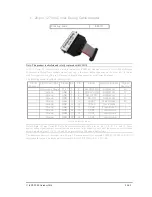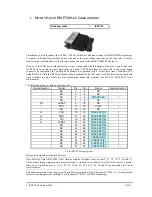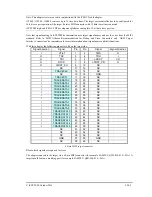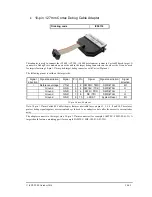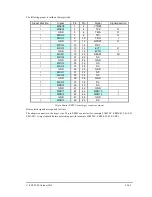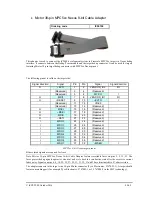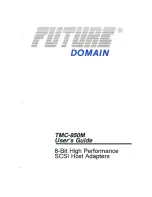
iSYSTEM, October 2016
38/69
Mictor 38-pin MPC5xxx Nexus 8-bit Cable Adapter
Ordering code
IC50151
Note: This product is obsolete and is fully replaced with IC50152
This adapter is used to connect the iC5000 / iC5500 / iC6000 development system to Freescale MPC5xxx or ST
SPC56 based target via Nexus debug interface. It connects to Debug/Trace module on one side and to the target
debug connector on the other side. It can be used for targets featuring Mictor 38-pin target debug connector with
MPC5xxx Nexus pinout.
This adapter supports 2, 4 or 8-bit Nexus port width only. However, it can be also used for Nexus trace on
targets where physically more than 8 Nexus data (MDO) lines are connected to the target debug connector by
configuring on-chip Nexus module for operation with 8 or less data lines (where possible). For majority of
MPC5xxx microcontrollers, it’s possible to configure on-chip Nexus module to broadcast Nexus information
through variable amount of Nexus data (MDO) lines. For instance, MPC555x can be configured for 4 or 12-bit
Nexus port operation, MPC551x for 8 or 12 bit Nexus port operation, etc… Note that Nexus port bandwidth
proportionally drops off when less Nexus data (MDO) lines are used and trace overflows are more likely to
occur. If maximum bandwidth is needed, use IC50152, MPC5xxx Nexus 16-bit cable adapter.
Jumper J2 (EVTIN)
Under some circumstances it can happen that the debugger cannot find any absolute program counter message in
the analyzed Nexus trace block. Consequentially, trace reconstruction fails and errors or nothing gets displayed
in the trace window. To avoid such situations, the debugger can feed periodic signal to the EVTIN CPU pin
connecting to the on-chip Nexus engine, which then periodically generates and broadcasts program counter
synchronization messages.
In order to use this feature, jumper J2 must be bridged and the ‘Force periodic Nexus SYNC’ option in the
‘Hardware/emulation Options/CPU Setup/Nexus’ tab must be checked. Refer to iSYSTEM ‘Freescale MPC5xxx
& ST SPC56 Family On-Chip Emulation’ technical notes document for more details on the ‘Force periodic
Nexus SYNC’ option use.
Note that the EVTI (Nexus Event In) CPU pin may be shared with other CPU functionalities. For instance, on
MPC5516 the same pin can operate as GPIO, EBI read/write or EVTI. Whenever the CPU pin is configured and
used for EVTI alternate operation, J2 must not be populated in order to prevent electrical conflicts.
Note: In general there is no need to use ‘Force periodic Nexus SYNC’ functionality unless a specific application
code is traced, which does not generate messages containing absolute program counter information. As long as
the user has no problems with the trace use, it is recommended to keep jumper 2 disconnected.
Note: Jumper J2 was introduced with rv:B1, previous versions (rv: A1, A2) do not have this jumper.

